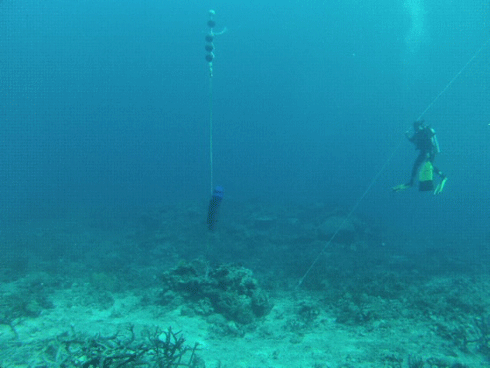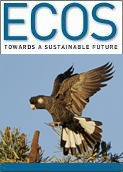
|
Published: 12 June 2013
Keeping an ear to the Reef
Queensland researchers are recording underwater sounds in the Great Barrier Reef to help track animal movements and human activities such as shipping.

|
|
The acoustic recorder in action. Credit:
JCU
|
James Cook University’s Centre for Sustainable Tropical Fisheries and Aquaculture (CSTFA) is collaborating with JASCO Applied Sciences, a world leader in the science of industrial underwater noise and its effect on marine life.
A JASCO Applied Sciences Acoustic Multichannel Acoustic Recorder (AMAR) was deployed late last month at Wheeler Reef off Townsville for a three-month project.
The AMAR will record sounds across a broad range of frequencies to better understand the role of natural, biological and man-made noise in the Great Barrier Reef.
CSTFA Director, Professor Colin Simpfendorfer, said the recorder had unique abilities.
‘It provides us with an amazing ability to record the sounds of the reef, including a range of fish, crustaceans, whales and dolphins that all generate unique noises.
‘On top of that, it also records the noise generated by human activities such as shipping, and acoustic tags that we use to track fish and sharks.’
JASCO engineer Craig McPherson said acoustics were a very powerful tool that to date had been under-utilised in the GBR.
‘The AMAR is a cutting-edge acoustic recorder capable of capturing a wide spectrum of sounds, from the high frequency echolocation click of a dolphin to a low frequency distant ship.
‘In this project it will store recorded sounds onto more than 1.8 Terabytes of solid state memory for later downloading and processing, however it is also possible to stream the information in real time if the project demands it.’
Once processed, the information recorded would provide a better understanding of the role of the natural, biological and anthropogenic underwater soundscape contributors in the GBR, he said.
The acoustic underwater environment includes natural sounds such as wind, rain and waves; sounds generated by individual animals and species choruses of crustaceans, fish and marine mammals; and man-made sounds such as reef vessel traffic and commercial shipping.
Mr McPherson said that apart from locating acoustic tags, the researchers were interested in investigating the sounds of marine mammals and fish, the level of man-made noise exposure currently occurring, and the potential for this noise to mask communications of marine mammals and fish spawning aggregations.
The results would be of value to scientists, regulatory and management bodies such as GBRMPA and both Commonwealth and State fisheries managers.
‘Ultimately, we hope that what we learn from this work will help improve how the GBR is managed for the benefit of all,’ he said.
Source: JCU



